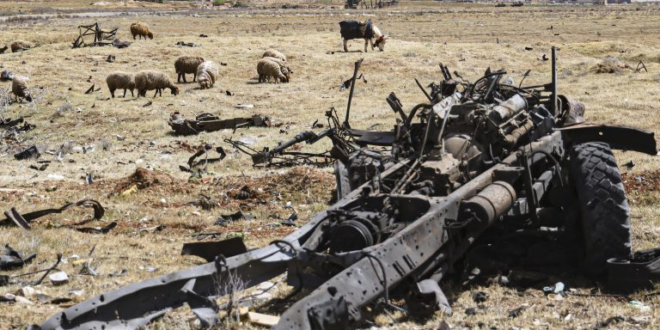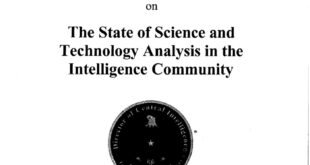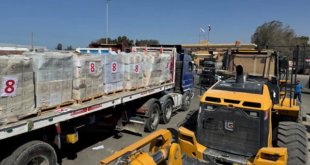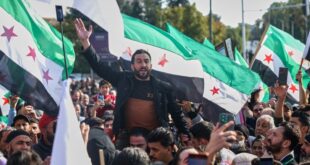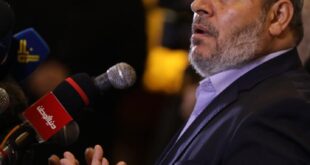Israeli forces are expanding their control over neighboring territories in an effort to prevent further attacks by hostile forces, but in the process complicating conflict resolution efforts.
The renewed expansion of the Israeli military presence in Gaza has not advanced U.S.-led efforts to end the conflict there.
Israeli penetration into Syrian territory threatens to alienate and potentially destabilize the post-Assad government led by Hayat Tahrir al-Sham (HTS) and has increased tensions with Türkiye.
Israel’s refusal to withdraw forces from several strategic locations in south Lebanon might hinder efforts by U.S. officials and Lebanon’s leaders to disarm Lebanese Hezbollah.The Israeli political establishment, still shaken by the October 7, 2023, Hamas incursion into Israel, is expanding the Israel Defense Forces (IDF) presence on the country’s most active frontiers to carve out secure zones against Hamas, Lebanese Hezbollah, and forces linked to Hayat Tahrir al-Sham (HTS) in post-Assad Syria. Israel considers all these actors as actual or potential threats to launch an incursion or rocket and missile attacks on Israelis living in towns near the borders. The IDF operations suggest the country’s political and military leaders see control over border territory as equally central to national security strategy as air superiority, sophisticated air and missile defense systems, and a nuclear deterrent.
However, the Israeli insistence on expanding its control over frontier territories also presents risks. The IDF’s return to Gaza following the March 1 end of Phase One of a January ceasefire has complicated efforts by U.S., Egyptian, and Qatari mediators to end the Gaza conflict and threatened a truce with Lebanese Hezbollah. Israel’s entry into an established UN-policed buffer zone on the Golan Heights threatens to create enmity with a post-Assad Islamist regime in Syria that seeks to stabilize the country and has not expressed hostility toward Israel. IDF operations in Syria have added to tensions with Türkiye, which has sharply criticized Israel’s actions in Gaza and now considers Syria, led by its ally, HTS, within Ankara’s expanding “sphere of influence.”
In mid-March, following weeks of fruitless efforts by Trump mediator Steven Witkoff and his regional counterparts to extend a January Israel-Hamas ceasefire and achieve the release of additional Israeli hostages, Netanyahu resumed air strikes on Hamas targets in Gaza. Since then, the IDF has moved back into strategic locations in the enclave, such as the Netzarim Corridor the IDF constructed to bisect Gaza into northern and southern portions. The stated intent of the Israeli actions is to pressure Hamas to accept U.S.-led proposals to extend Phase One of the ceasefire and release more of the 59 Israeli hostages still held, of which 24 are believed to be still alive. On Thursday, hundreds of thousands of Gazans sought shelter in one of the largest displacements of the war as Israeli forces advanced into the ruins of the city of Rafah, part of a newly announced “security zone” they intend to seize. On Friday, Netanyahu and Israeli Defense Minister Israel Katz said their forces would seize more parts of the both the northern and southern areas of the enclave, escalating until Hamas agrees to release all remaining hostages and to surrender any role in postwar governance and security.
Yet, Hamas has shown little inclination to compromise except in exchange for a termination of the conflict, as outlined in the January truce accord. Israeli leaders fear that the outcome will enable the movement to rebuild its ranks and continue to exert political influence in the enclave. Yet, Witkoff and other mediators, including senior officials from Egypt and Qatar, are continuing to search for a solution, and some mediators derive hope from a late March three-day uprising against Hamas in parts of the Gaza Strip. Gazan demonstrators called on the movement to yield power and release all remaining hostages to avoid further Israeli attacks. However, the demonstrations have not measurably altered Hamas’ positions or shaken its grip on the Gaza population.
On the other major post-October 7 front – south Lebanon – a November U.S.-brokered ceasefire between Israel and Lebanese Hezbollah teeters on the verge of collapse. Under the truce accord, Israeli forces were to have withdrawn from all of south Lebanon by an extended deadline of February 18. Most Israeli forces evacuated prior to the original January 26 date, as Hezbollah forces redeployed north of the Litani River and the Lebanese Armed Forces (LAF) gradually made their way into the buffer zone, as prescribed. However, Israeli leaders have stated the IDF will remain indefinitely in five strategic locations (higher elevation points) in southern Lebanon near the border.
In addition to remaining in south Lebanon, the Israeli military struck southern Beirut on March 28, for the first time since the November truce after Israel said that two projectiles had been fired from Lebanon. The IDF said it “struck a terrorist infrastructure site used to store UAVs (armed drones) by Hezbollah’s Aerial Unit (127) in the area of Dahieh, a key Hezbollah terrorist stronghold in Beirut.” That day, Netanyahu threatened further escalation, saying his forces would “attack everywhere” in Lebanon in response to any threat against Israel, adding: “We will not allow firing on our communities, not even a drizzle…We will attack everywhere in Lebanon against any threat to the state of Israel, and we will ensure that all our residents in the north return to their homes safely.”
U.S. officials recognize the potential for Israel’s refusal to fully withdraw from south Lebanon to interfere with broader objectives against Iran’s Axis of Resistance. The U.S. is promoting land border talks between Israel and Lebanon, agreement on which would deprive Hezbollah of justification to remain armed as a “resistance” to Israeli occupation. Deputy U.S. Special Envoy to the Middle East Morgan Ortagus visited Lebanon again last week to urge the Lebanese President, Joseph Aoun (formerly the LAF commander), to disarm Hezbollah and to promote economic reforms. In meetings with him and other Lebanese leaders, Ortagus emphasized the need for the LAF to assert control over all Lebanese territory, not just south of the Litani River – a boundary demarcated by UN Security Council Resolution 1701 that prohibits an armed Hezbollah as well as Israeli presence south of the river following the 2006 Israel-Hezbollah war. However, the continued Israeli presence in south Lebanon not only delays the start of land border talks but also enables Hezbollah to assert it needs to remain armed to combat Israel’s continued occupation of Lebanese land.
Israel sees Syria as an emerging new war front following the December dissolution of the Assad regime that, although rhetorically hostile, abided by longstanding border truces with Israel and did not join attacks by other members of the Axis of Resistance on Israel after October 7. The post-Assad HTS-led regime, dominated by Sunni Islamists, has largely eliminated Iranian influence from Syria, and has expressed no intent to attack Israel. However, Israeli leaders assess that the new regime in Damascus might eventually turn hostile or align with other regional non-state actors, such as Hamas.
In post-Assad Syria, Israel followed a well-honed playbook, conducting operations intended to carve out a buffer zone that would prevent potentially hostile HTS or HTS-allied Islamist forces from threatening Israel. The IDF has conducted major airstrikes on Syrian weapons stockpiles and taken control of a UN-patrolled demilitarized zone on the Syrian side of their border on the disputed Golan Heights, which Israel annexed but which is still internationally recognized as Syrian territory. The IDF also has undertaken ground operations deep into southern Syria and offered protection to the Druze minority community in southern Syria against the HTS regime. Last Wednesday, Israel bombed several military targets in Syria, including the Hama military airport and the T4 base near Homs, killing nine people.
The Israeli effort to expand its security perimeter in Syria has the potential to produce unintended adverse consequences for Syrian stability and regional security. The interim government of HTS leader Ahmad al-Sharaa is attempting to stabilize post-Assad Syria by eliciting cooperation from restive minority communities, including ethnic Kurds, the Druze, and the Alawite community that was Assad’s political base. Israeli attacks on Syrian territory have triggered HTS threats of retaliation and stirred resentment of Israel among the Syrian public. The destruction of Syrian military assets hinders government efforts to centralize a monopoly on the use of force by disarming non-state actors, combatting remnants of Islamic State (ISIS), and preventing infiltration by Lebanese Hezbollah militia fighters.
Strategically, the Israeli operations in Syria have inflamed already tense relations with Türkiye, a vocal critic of Israeli tactics against Hamas in Gaza. Having backed the HTS-led rebellion that toppled Assad, Türkiye now considers Syria as part of its sphere of influence in a region in which Turkish influence is growing at the expense of Iran, Russia, and other actors. Ankara is negotiating a joint defense pact with the Syrian interim government, possibly including stationing aircraft and air defense systems at some Syrian airbases. Türkiye wants Syria to stabilize and rebuild, paving the way for many of the 3 million Syrian refugees in Türkiye to return home. But, viewing any Turkish buildup in Syria as a potential threat to the Israeli military’s room for maneuver there, Israeli Defense Minister Katz warned al-Sharaa that he would “pay a very heavy price” if he allowed “hostile forces” to enter his country. Still, no open Israel-Türkiye hostilities appear imminent. On Friday, Türkiye’s Foreign Minister Hakan Fidan said on the sidelines of a NATO meeting in Brussels his country has no desire to enter into conflict with Israel in Syria.
 Eurasia Press & News
Eurasia Press & News
